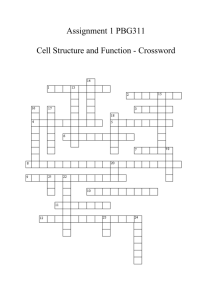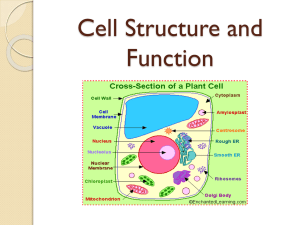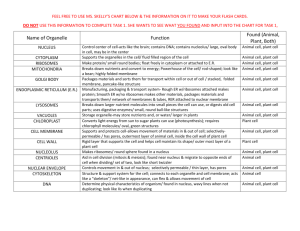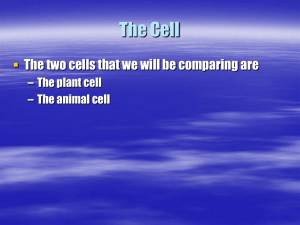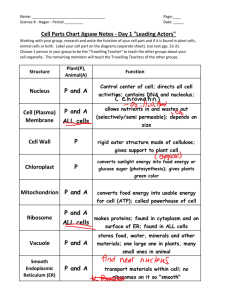Name: Date:______ Hour:______ Health Occ. Ch. 7.1 & 7.3 Test
advertisement
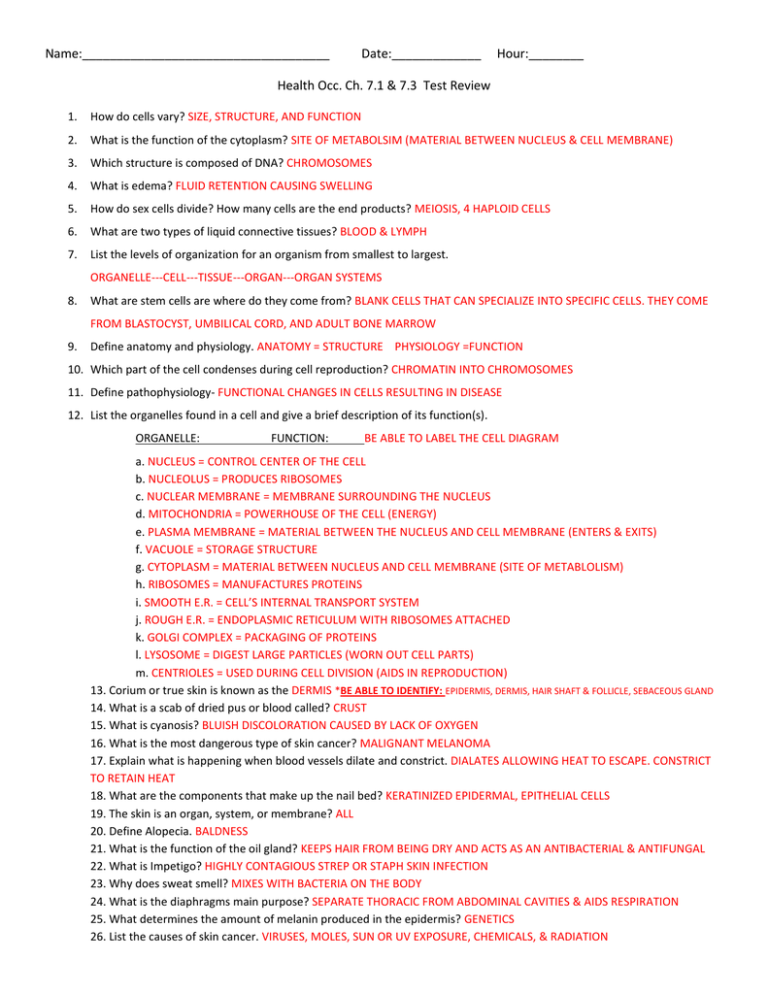
Name:____________________________________ Date:_____________ Hour:________ Health Occ. Ch. 7.1 & 7.3 Test Review 1. How do cells vary? SIZE, STRUCTURE, AND FUNCTION 2. What is the function of the cytoplasm? SITE OF METABOLSIM (MATERIAL BETWEEN NUCLEUS & CELL MEMBRANE) 3. Which structure is composed of DNA? CHROMOSOMES 4. What is edema? FLUID RETENTION CAUSING SWELLING 5. How do sex cells divide? How many cells are the end products? MEIOSIS, 4 HAPLOID CELLS 6. What are two types of liquid connective tissues? BLOOD & LYMPH 7. List the levels of organization for an organism from smallest to largest. ORGANELLE---CELL---TISSUE---ORGAN---ORGAN SYSTEMS 8. What are stem cells are where do they come from? BLANK CELLS THAT CAN SPECIALIZE INTO SPECIFIC CELLS. THEY COME FROM BLASTOCYST, UMBILICAL CORD, AND ADULT BONE MARROW 9. Define anatomy and physiology. ANATOMY = STRUCTURE PHYSIOLOGY =FUNCTION 10. Which part of the cell condenses during cell reproduction? CHROMATIN INTO CHROMOSOMES 11. Define pathophysiology- FUNCTIONAL CHANGES IN CELLS RESULTING IN DISEASE 12. List the organelles found in a cell and give a brief description of its function(s). ORGANELLE: FUNCTION: BE ABLE TO LABEL THE CELL DIAGRAM a. NUCLEUS = CONTROL CENTER OF THE CELL b. NUCLEOLUS = PRODUCES RIBOSOMES c. NUCLEAR MEMBRANE = MEMBRANE SURROUNDING THE NUCLEUS d. MITOCHONDRIA = POWERHOUSE OF THE CELL (ENERGY) e. PLASMA MEMBRANE = MATERIAL BETWEEN THE NUCLEUS AND CELL MEMBRANE (ENTERS & EXITS) f. VACUOLE = STORAGE STRUCTURE g. CYTOPLASM = MATERIAL BETWEEN NUCLEUS AND CELL MEMBRANE (SITE OF METABLOLISM) h. RIBOSOMES = MANUFACTURES PROTEINS i. SMOOTH E.R. = CELL’S INTERNAL TRANSPORT SYSTEM j. ROUGH E.R. = ENDOPLASMIC RETICULUM WITH RIBOSOMES ATTACHED k. GOLGI COMPLEX = PACKAGING OF PROTEINS l. LYSOSOME = DIGEST LARGE PARTICLES (WORN OUT CELL PARTS) m. CENTRIOLES = USED DURING CELL DIVISION (AIDS IN REPRODUCTION) 13. Corium or true skin is known as the DERMIS *BE ABLE TO IDENTIFY: EPIDERMIS, DERMIS, HAIR SHAFT & FOLLICLE, SEBACEOUS GLAND 14. What is a scab of dried pus or blood called? CRUST 15. What is cyanosis? BLUISH DISCOLORATION CAUSED BY LACK OF OXYGEN 16. What is the most dangerous type of skin cancer? MALIGNANT MELANOMA 17. Explain what is happening when blood vessels dilate and constrict. DIALATES ALLOWING HEAT TO ESCAPE. CONSTRICT TO RETAIN HEAT 18. What are the components that make up the nail bed? KERATINIZED EPIDERMAL, EPITHELIAL CELLS 19. The skin is an organ, system, or membrane? ALL 20. Define Alopecia. BALDNESS 21. What is the function of the oil gland? KEEPS HAIR FROM BEING DRY AND ACTS AS AN ANTIBACTERIAL & ANTIFUNGAL 22. What is Impetigo? HIGHLY CONTAGIOUS STREP OR STAPH SKIN INFECTION 23. Why does sweat smell? MIXES WITH BACTERIA ON THE BODY 24. What is the diaphragms main purpose? SEPARATE THORACIC FROM ABDOMINAL CAVITIES & AIDS RESPIRATION 25. What determines the amount of melanin produced in the epidermis? GENETICS 26. List the causes of skin cancer. VIRUSES, MOLES, SUN OR UV EXPOSURE, CHEMICALS, & RADIATION

